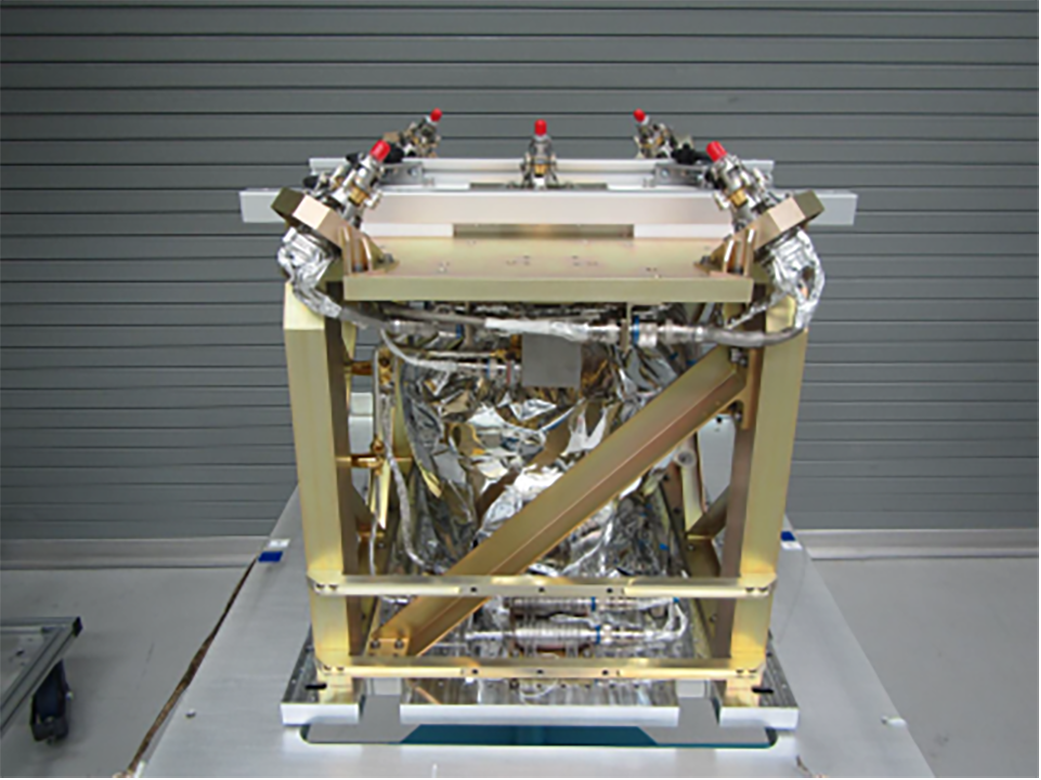Space exploration is about to go “greener.”
NASA’s Green Propellant Infusion Mission to develop a high-performance, low-toxicity fuel and propulsion system for spacecraft has passed a major milestone. A green propellant propulsion subsystem, built by Aerojet Rocketdyne in Redmond, Washington, has been delivered to the mission’s prime contractor, Ball Aerospace & Technologies Corp. in Boulder, Colorado.
The mission will demonstrate the practical capabilities of a hydroxyl ammonium nitrate based fuel/oxidizer propellant blend, known as AF-M315E. This innovative propellant, developed by the U.S. Air Force Research Laboratory at Edwards Air Force Base in California, offers higher performance but is safer to handle and easier on the environment than traditional chemical fuels such as hydrazine now used in thrusters. It also requires fewer handling restrictions and potentially shorter launch processing times, resulting in lowered costs.
The new propellant is 40-percent denser than hydrazine, meaning more of it can be stored in containers of the same volume. This provides a 50-percent increase in maneuvering capability for a given volume. It also has a lower freezing point than hydrazine, requiring less spacecraft power to maintain its temperature. These characteristics make it ideal for a wide range of emerging small, deep space satellite missions.
“It’s time to see this kind of breakthrough technology with green propellant,” said Larry Gagliano, manager of the Technology Demonstration Missions Program at NASA’s Marshall Space Flight Center in Huntsville, Alabama. “This small spacecraft mission will represent the United States’ first attempt to test green propellant technology for future space exploration.”
The green propellant propulsion subsystem consists of a propellant tank and five 1-newton thrusters that will use the new fuel. Because AF-M315E burns hotter than hydrazine, it required new metals to withstand the temperatures in the thrusters aboard the propulsion system.
“This propulsion system delivery marks the success of more than 10 years of research and development,” said Julie Van Kleeck, vice president of Advanced Space and Launch Systems at Aerojet Rocketdyne. “The Green Propellant Infusion Mission is the culmination of excellent teamwork between NASA, the Air Force, Ball Aerospace and Aerojet Rocketdyne.”
The propulsion subsystem will be the primary payload on the mission’s spacecraft — a Ball Configurable Platform 100 small satellite. Ball has already begun integrating the propulsion subsystem onto the space vehicle. The spacecraft will also carry three experimental payloads.
“This is a critical milestone for the program that will be a game-changer for in-space propulsion,” said Jim Oschmann, vice president and general manager of Civil Space and Technology at Ball Aerospace. “This new technology offers longer mission durations, additional maneuverability, increased payload space and simplified launch processing for future spacecraft.”
The Green Propellant Infusion Mission is scheduled for a launch to low-Earth orbit in 2018 in partnership with the Army Space and Missile Defense Command. Additional team members includes the Air Force Space and Missile Systems Center, Kirtland Air Force Base, New Mexico, and NASA’s Glenn Research Center in Cleveland, Goddard Space Flight Center in Maryland and Kennedy Space Center in Florida.
During the test flight, researchers will conduct orbital maneuvers to demonstrate the performance of the propellant during attitude control shifts, changes in orbital inclination and orbit lowering.
The mission is part of a portfolio of technology demonstration flight and ground projects led by NASA teams and industry partners across the country, managed by the Technology Demonstration Missions program office at Marshall.
Technology demonstration missions are sponsored by NASA’s Space Technology Mission Directorate in Washington, which is innovating, developing, testing and flying hardware for use in future missions. NASA’s technology investments provide cutting-edge solutions for our nation’s future. For more information about the directorate, visit:
https://www.nasa.gov/spacetech
For more information about the NASA’s Green Propellant Infusion Mission, visit:
https://www.nasa.gov/mission_pages/tdm/green/gpim_overview.html
For more information about NASA’s Technology Demonstration Missions, visit:


























